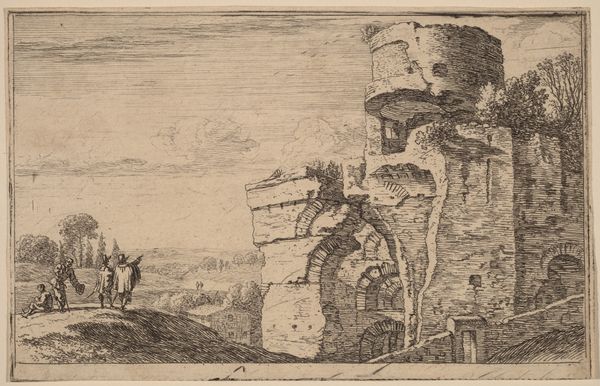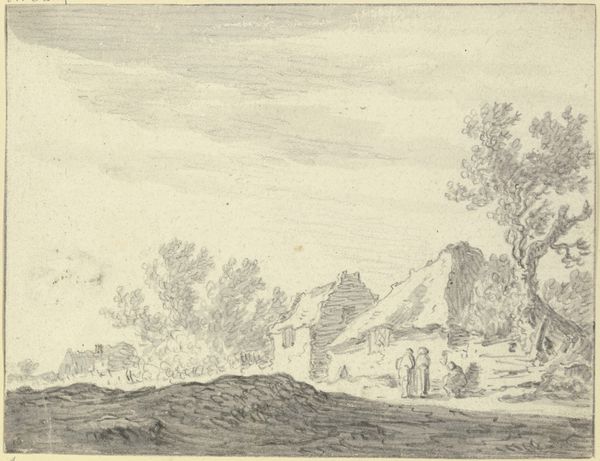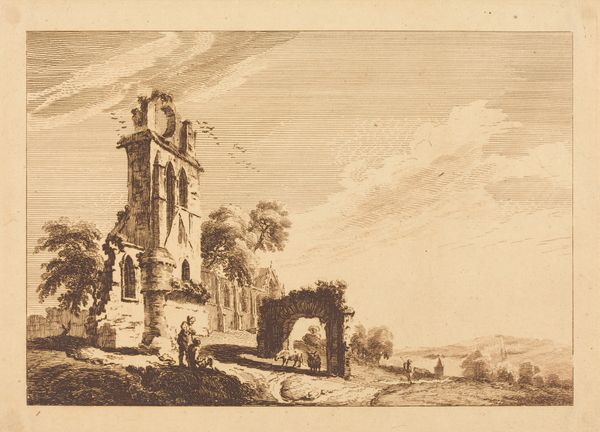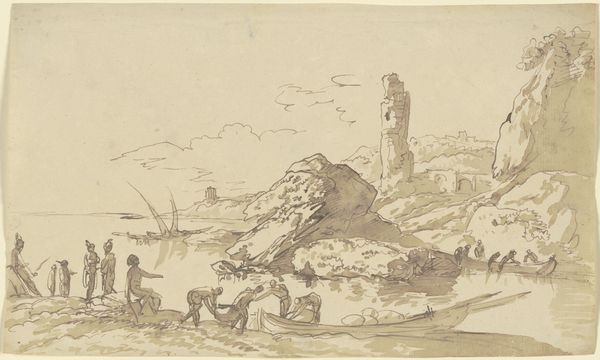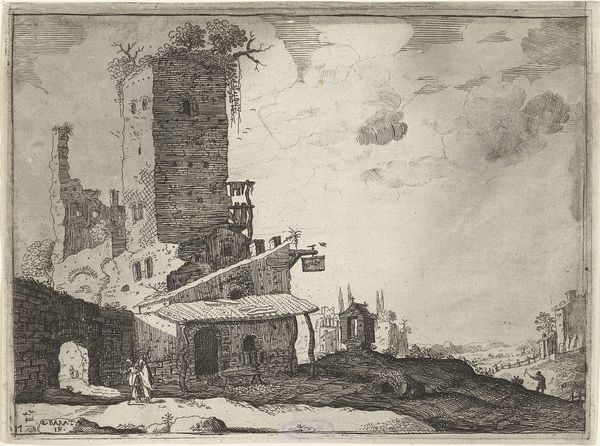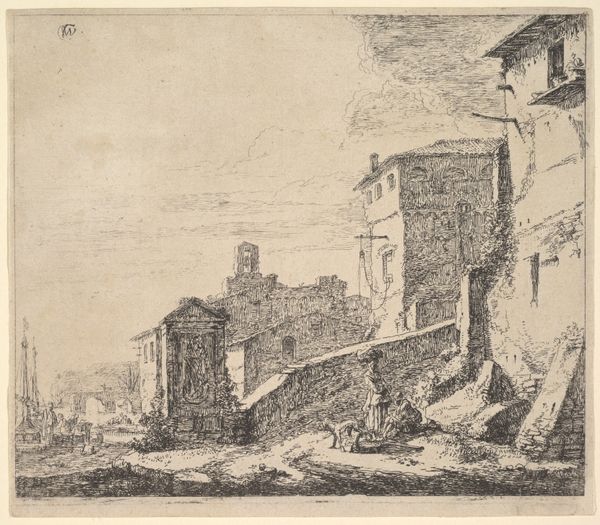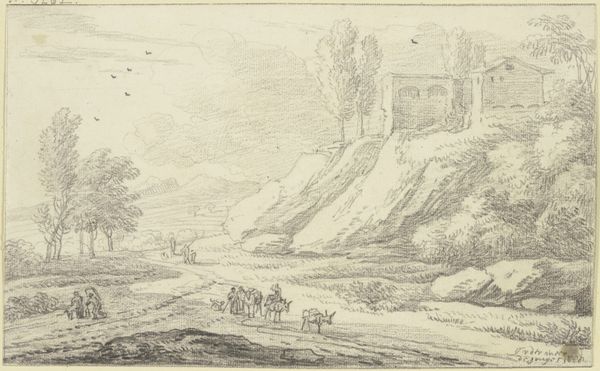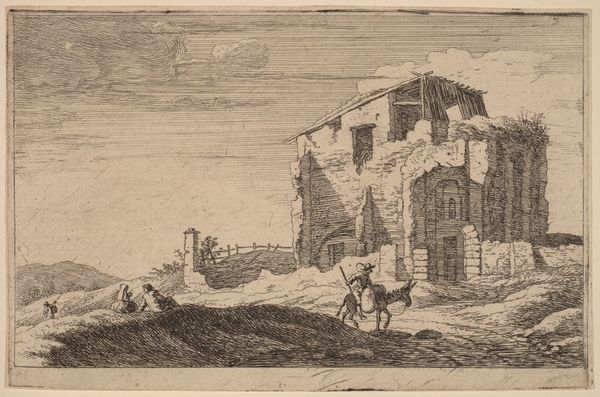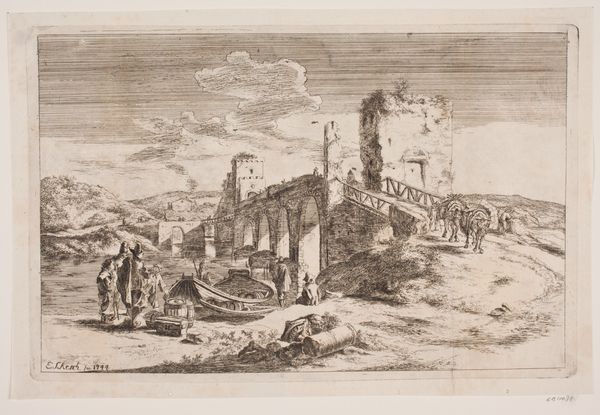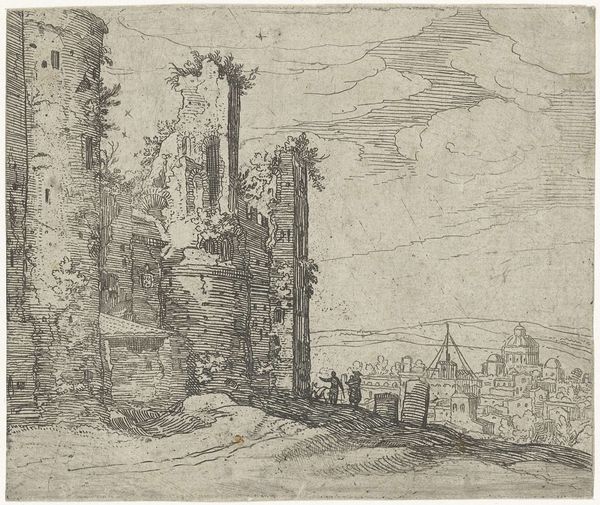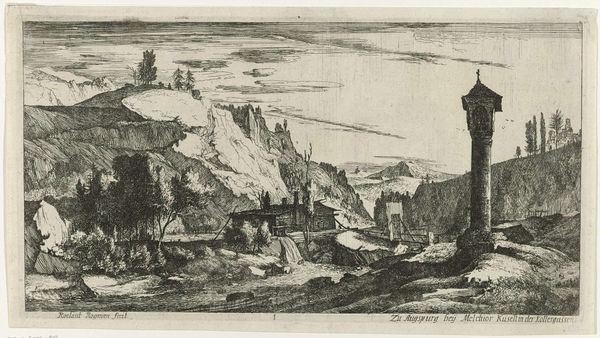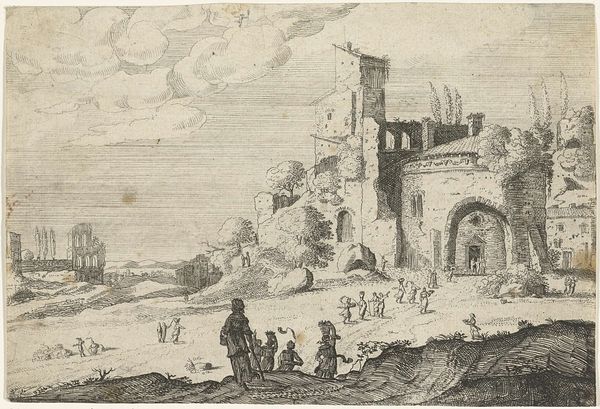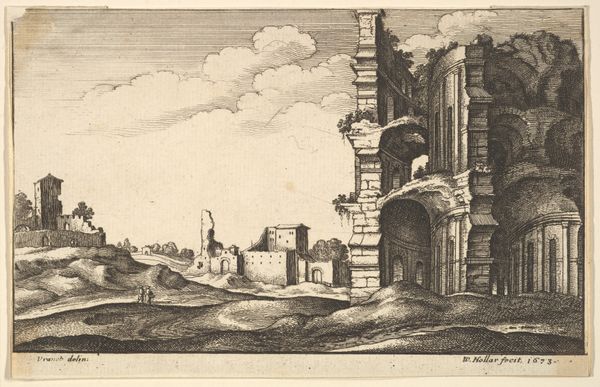
print, etching, engraving
#
dutch-golden-age
# print
#
pen sketch
#
etching
#
pencil sketch
#
landscape
#
pen-ink sketch
#
line
#
pen work
#
history-painting
#
engraving
Dimensions: height 120 mm, width 165 mm
Copyright: Rijks Museum: Open Domain
Jan van Ossenbeeck created this etching of a 'Landscape with a Sarcophagus and Fountain' sometime in the mid-17th century. The image depicts a classical landscape with a sarcophagus and fountain, two visual codes often used in Dutch Golden Age painting to refer to the past, but also to ideas about death, rebirth and the cyclical nature of time. Ossenbeeck spent time in Italy, and the Italian influence is evident in his classicizing style. Rome, in particular, was a popular destination for Dutch artists during this period, as they sought to learn from the masters of the Renaissance and antiquity, while also hoping to establish an international reputation. Dutch artists often incorporated classical elements into their work to imbue their landscapes with a sense of historical and cultural depth. The ruins, sarcophagi, and fountains served as reminders of the past, while also suggesting the transience of human achievement. To fully understand the symbolic meanings in Ossenbeeck's etching, art historians need to research the classical and Italian influences on the artist, but also to carefully consider the place of these ideas in the cultural life of the Netherlands at this time.
Comments
No comments
Be the first to comment and join the conversation on the ultimate creative platform.
